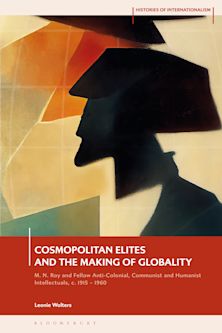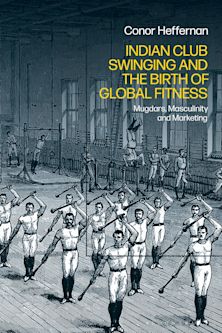- Home
- ACADEMIC
- History
- World History
- Getting High
This product is usually dispatched within 1 week
- Delivery and returns info
-
Free CA delivery on orders $40 or over
Exam copy added to basket
Choose your preferred format. Please note ebook exam copies are fulfilled by VitalSource™.
You must sign in to add this item to your wishlist. Please sign in or create an account
Description
Noted historian John Chasteen traces the global history of marijuana, exploring its rich heritage with captivating insight. Among the first domesticated plants, Surprisingly, though, only infrequently has it been used as a recreational drug. Instead, there is a vibrant spiritual dimension to its long history that has been continually ignored.
Table of Contents
Trouble with the Police
Meet the Cannabis Plant
2 American Century
The Early Years
The Marihuana Tax Act, 1937
Rise and Fall of the Counterculture
Drug War, Culture War
News Flash
3 Atlantic World
Hemp and Rum, Strategic Resources
Mexico, and a Mystery
Colombia and Jamaica
Brazil and the African Connection
Africa, South of the Congo
4 Medieval Hashish
Wine versus Hashish
Hashish in Muslim Society
God’s Unruly Friends
The Assassin Legend
Not for Everybody
5 Asian Origins
Historic India
The Prehistoric Eurasian Steppes
The Silk Road and Beyond
The Earliest Horizon
6 Epiphanies
Glossary
Sources and Asides
Index
About the Author
Product details
| Published | Oct 08 2021 |
|---|---|
| Format | Hardback |
| Edition | 1st |
| Extent | 160 |
| ISBN | 9781538161951 |
| Imprint | Rowman & Littlefield Publishers |
| Illustrations | 9 b/w illustrations |
| Dimensions | 238 x 160 mm |
| Series | Exploring World History |
| Publisher | Bloomsbury Publishing |
About the contributors
Reviews
-
Historian Chasteen (Born of Blood and Fire: A Concise History of Latin America) takes a succinct and engaging look at “the narrative of marijuana’s global history” over the past 2000 years. Beginning with the present day, with marijuana being smoked socially by everyone from professors to construction workers, Chasten works backwards: the early 20th century throughout the world; the 16th century, when the drug was used by Native Americans; the prevalence of hashish in the Middle East between 1100 and 1400; and the origins of cannabis in prehistoric Central Asia. By placing marijuana within larger historical patterns such as migration, colonialism, and religion, Chasteen highlights shows how the widespread use of marijuana as a recreational drug is “rare and recent” in world history, and argues that this current use has obscured “the big picture of world history,” which suggests that people have used marijuana most often as a spiritual, mind-expanding drug. Chasteen ably heightens readers’ awareness of the herb by reviewing the many ways marijuana has been used for “creative and philosophical epiphanies.”
Publishers Weekly
-
Historian Chasteen examines marijuana use from a global historical perspective, situating it within the social patterns of migration, economics, colonialism, religion, and geopolitics. Throughout this concise, fascinating world journey, he compares marijuana with alcohol and considers the extent to which the recreational use of marijuana has been driven by its purported mind-expanding powers. Chasteen provides an informative backward survey of the global use of cannabis in its many forms, beginning with an account of the ruinous war on drugs in the US, before tracing marijuana’s diffusion throughout the world, and ending the story in Central Asia. He concludes that while early hunter-gatherer shamans and later mystical ascetics certainly used cannabis for spiritual reasons, its broader use as a recreational drug is more recent. Alcohol has been the preferred recreational drug for those who could afford it, whereas cannabis has been adopted primarily by the socially and ethnically marginalized, the artistically and mystically inclined, and a variety of social and religious nonconformists…. An engaging study. For criminology, deviance, and history collections.
Summing Up: Highly recommended. All levels/libraries.Choice Reviews
-
The question that opens this treasure hunt is, 'when and where did fiber hemp plants become psychoactive cannabis strains?' We all are grateful why[?] John Charles Chasteen presents a trip back in time, visiting all parts of the planet. We follow a lot of false leads but we do find an answer. This is first rate scholarship. . . .The author is telling a story that is both wide and deep. He has done an excellent job. It is something that can be built upon by the next cannabists who follow along. This book is part of an emerging trend giving the cannabis plant a fresh start after eighty years of lies and fear, the legacy of Harry J. Anslinger. One of our first tasks in a re-legalized future will be to tell the true story of the cannabis plant. This book will help us do just that.
Hail Mary Jane
-
The book starts off with the history of cannabis in America. Going through the early years of America, the Marijuana Tax Act of 1937 and the Drug War. After establishing a base understanding of what is going on today, Chasteen goes into the history of marijuana through the Atlantic world, Medieval times and Asian origins of Cannabis Sativa. This easy reader is full of humor, history, and insight into the complexities of the marijuana debate.
Toke Tank
-
John Charles Chasteen has written the book we’ve been waiting for: the amazing tale of marijuana’s journey from ancient fiber to modern hallucinogen. Here lies the origin of cannabis and hashish, herb and weed, ganja and Maria Juana. Whirling dervishes, Indian yogis, Spanish conquistadors, Mexican herbolarias, European bohemians, and New Orleans stevedores—all play their parts in Chasteen’s tale and in the long, strange evolution of the world’s most controversial plant.
Bruce Barcott, author of Weed the People: The Future of Legal Marijuana in America
-
With an economy of words, a depth of understanding that spans nearly 4,000 years, and a researcher's acumen for relevant details and a global perspective, John Chasteen delivers to the curious reader what, at first, feels like 'forbidden knowledge.' Those who might believe that the interface between humans and cannabis began in modern times—that hippies discovered the herbal drug in the 60s—will quickly be disabused by this deft botanical tour de force that perfectly punctuates humanity's long, and complicated, relationship with the cannabis plant across every continent during the whole of recorded human history.
Allen St. Pierre, executive director, NORML Foundation


































